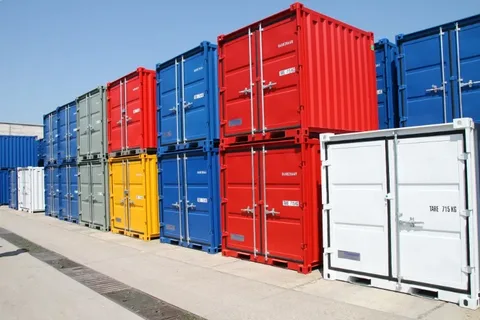
The rotomolded containers market is estimated to reach over US$ ~4.5 Billion in 2022 and is projected to reach US$ ~5.7 Billion by 2027, at a CAGR of 4.9% from 2022 to 2027
The growing demand from other end-use industries is also expected to boost the demand for rotomolded containers over the course of the forecast period. In order to cater to the growing need of both consumers and end users, manufacturers are focusing on research and development and are also investing heavily in order to stay ahead of the competition.
The market is highly fragmented and the competition is also intense, thus compelling players to come up with new techniques pertaining to product differentiation.
Request a Sample Report! https://www.futuremarketinsights.com/reports/sample/rep-gb-4458
For instance, in July 2016, RPC Group Plc. launched a new innovative pack solution with an injection molded screw lid. Then again, in August 2016, RPC Group Plc. acquired British Polythene Industries. Keeping the competition in mind, other companies such as Pelican Products, Inc., Snyder Industries Inc., Zero Manufacturing Inc., SKB Corporation, Inc., MODRoto, Inc., and Gemstar Manufacturing, among many others are also pulling up their socks. According to the report, the global market for rotomolded containers is expected to witness a CAGR of 4.8% from 2017 to 2027.
High Performance as Against Blow Molded Containers to Aid in Adoption
Rotational molded containers are far more superior in comparison to their blow molded counterparts. Rotational molding has witnessed significant growth in terms of evolution in the past few decades. The key driver of the growing preference for rotational molding is its inexpensive nature. Compared to blow molded containers, the production of rotomolded containers is comparatively cost effective.
Employing the blow molding process for manufacturing containers incurs high cost due to the requirement of different chemicals. Hence, many manufacturers have made the switch from the blow molding process as the preferred mode of production to rotational molding. Besides, rotational molding enables the production of several parts as a single piece.
In contrast, blow molding produces rather weak structures in its molds. Owing to the high demand for sturdy and safe containers, rotational molding is employed as the preferred method, as it makes use of heat instead of pressure unlike the blow molding process. The demand for rotomolded containers is anticipated to be driven mainly by the shifting preferences of consumers.
Moreover, customisation is expected to emerge as a key factor bolstering the growth of the market. Rotational molding is anticipated to witness high growth in adoption as the ideal production process for containers due to several reasons. As opposed to processes such as injection molding, in case of rotational molding, the material is not inoculated or forced to form a particular shape. This gives rise to opportunities for the production of containers in different styles and sizes.
Rotational molding also supports a wide range of sizes, with precise surface detail, along with the use of different colours at different stages of the process. This leads to the implementation of aesthetic skills and the option to include the company’s logo on the surface of the container, without the risk of the branding peeling off.
Get in Touch with Our Sales Team to Secure Your Copy of the Report Now! https://www.futuremarketinsights.com/checkout/4458
Rotomolded Containers Market by Category
By Material Type:
- Polyethylene (PE)
- Polypropylene (PP)
- Polyvinyl Chloride (PVC)
- Polyamide (PA)
- Others
By Product Type:
- Rotomolded Cases
- Rotomolded Tanks
- Rotomolded IBCs
- Rotomolded Trays
- Other Rotomolded Containers
By End Use Industry:
- Consumer Electronics
- Material Handling
- Chemicals & Fertilizers
- Food & Beverages Processing
- Petroleum & Lubricants
- Others
By Region:
- North America
- Latin America
- Western Europe
- Eastern Europe
- Asia Pacific Excluding Japan (APEJ)
- Middle East and Africa (MEA)
- Japan
About Future Market Insights Inc. (FMI)
Future Market Insights, Inc. (ESOMAR certified, recipient of the Stevie Award, and a member of the Greater New York Chamber of Commerce) offers profound insights into the driving factors that are boosting demand in the market. FMI stands as the leading global provider of market intelligence, advisory services, consulting, and events for the Packaging, Food and Beverage, Consumer Technology, Healthcare, Industrial, and Chemicals markets. With a vast team of over 400 analysts worldwide, FMI provides global, regional, and local expertise on diverse domains and industry trends across more than 110 countries.
Contact Us:
Future Market Insights Inc.
Christiana Corporate, 200 Continental Drive,
Suite 401, Newark, Delaware – 19713, USA
T: +1-845-579-5705
For Sales Enquiries: sales@futuremarketinsights.com
Website: https://www.futuremarketinsights.com
LinkedIn| Twitter| Blogs | YouTube
